Researching for Picture Books
Created the visual language + what my development process is like
What goes into the research and development for a picture book?
In case you missed it, I have a new book coming out on April 1st called THE SALT PRINCESS.
The book comes out in just two weeks, but if you preorder from Buyolympia, you can get a FREE 8x10 print!
This is my third book illustrated with traditional media, and it’s been my most challenging yet!
Today I wanted to go over how I created the visual language for this book, and what my development process is like.
Finding the Right Art Style
The Salt Princess is part of a series called Everlasting Tales, which reimagines folk stories from around the world for a modern audience.
I was approached to adapt a Pakistani folk story, and I was so excited to work on this dream project. (If you’re interested in the writing process, let me know in the comments!)
Despite the pre-existing impression people may have based on media, Pakistan has a rich art and cultural history and I really wanted to highlight that in the story. While working on the book Rani’s Remarkable Day a few years back, I became utterly obsessed with Islamic and South Asian architecture since the story takes place in a grand palace full of princess antics.
Think beautiful arches, bone-inlay and mosaic, decorative murals, courtyards, pillars and carved wood.
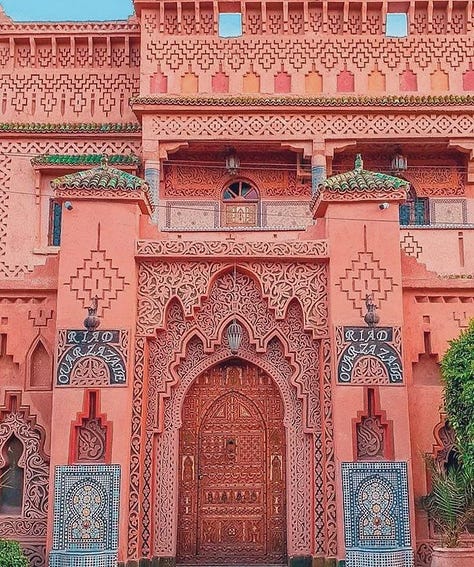
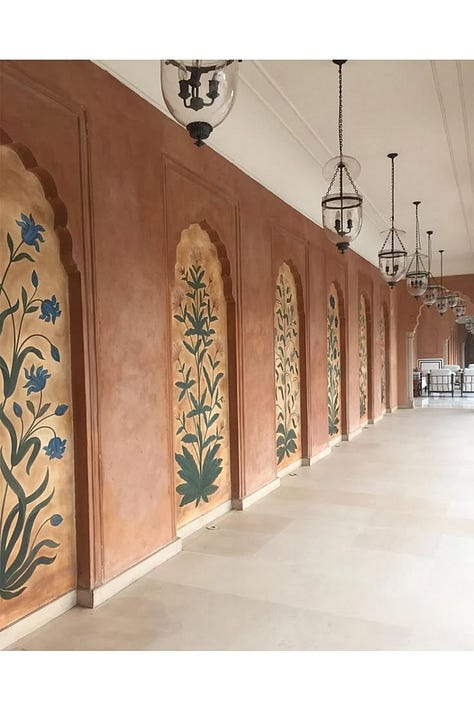

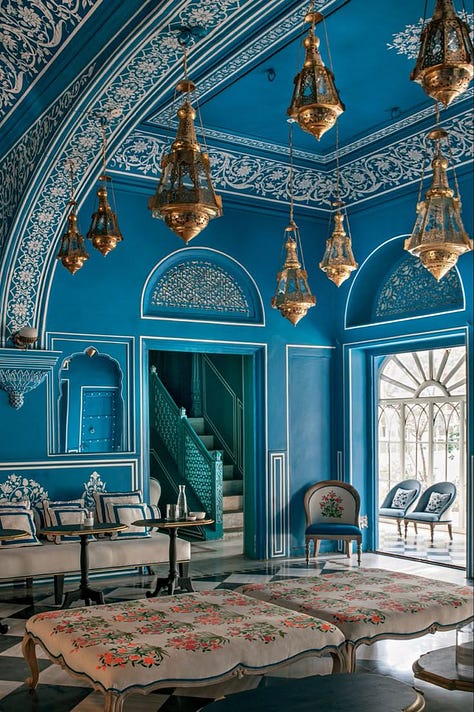
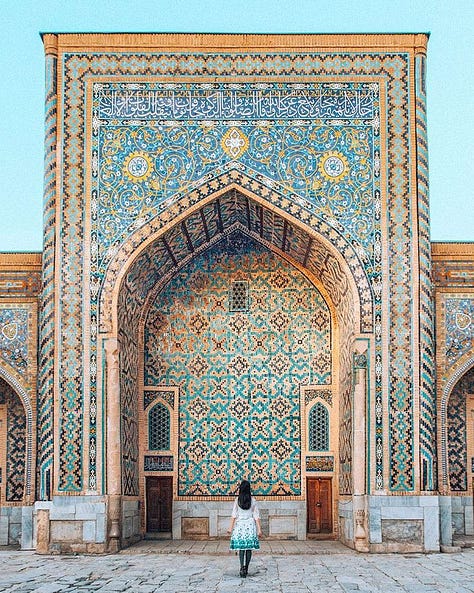
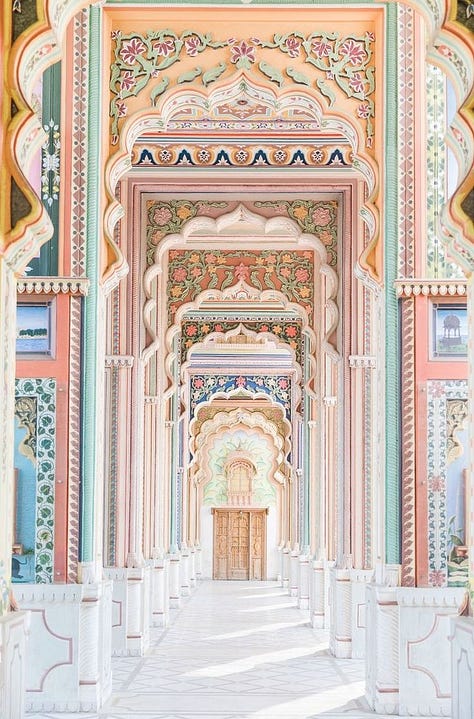
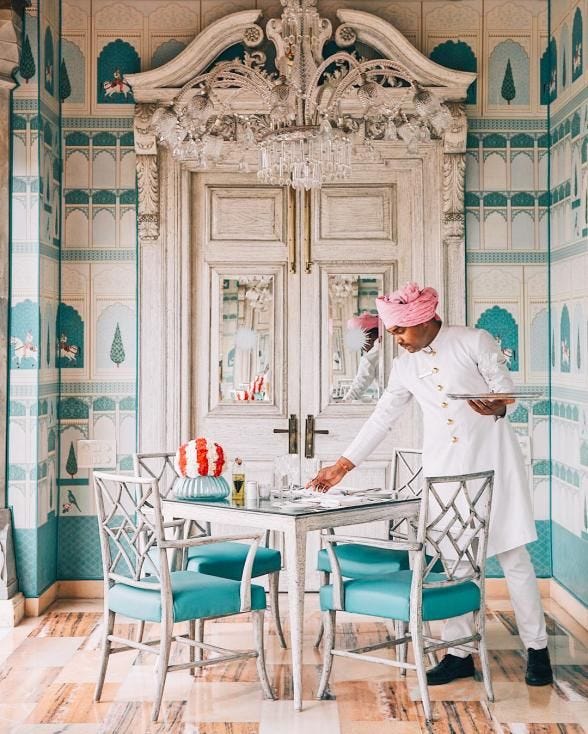

While collecting my reference images for the architecture and stumbled across miniature painting.
Mughal miniature painting is a gorgeous intricate art form that flourished during the Mughal Empire (around the 16th–19th century). Although small, these highly detailed paintings were used to illustrate manuscripts, royal happenings, and portraits of emperors and court life. They were originally influenced by Persian, Indian, and later on, European styles. They featured super fine brushwork, vibrant colors, and sometimes gold accents.
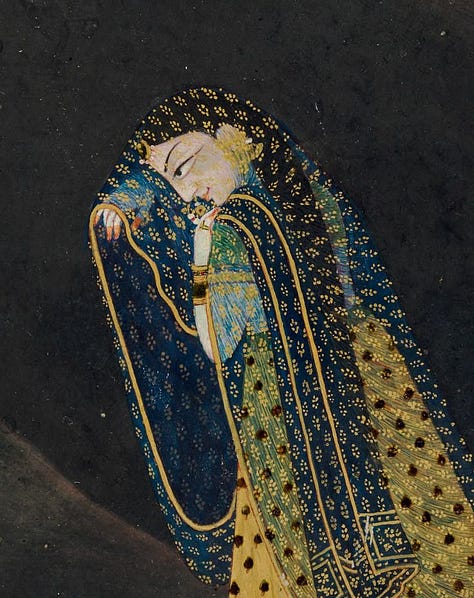

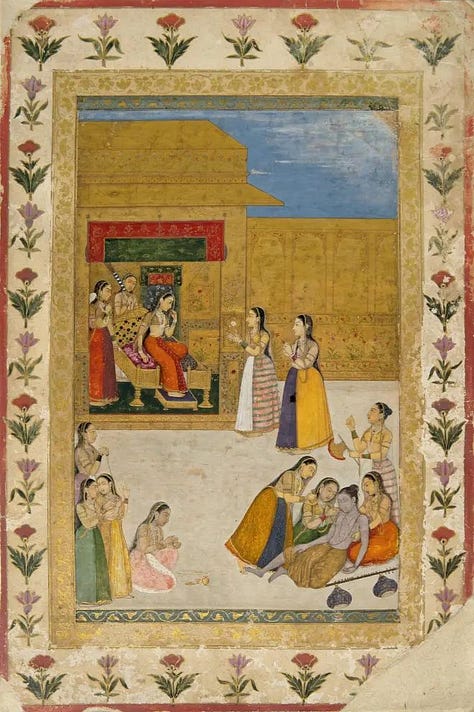

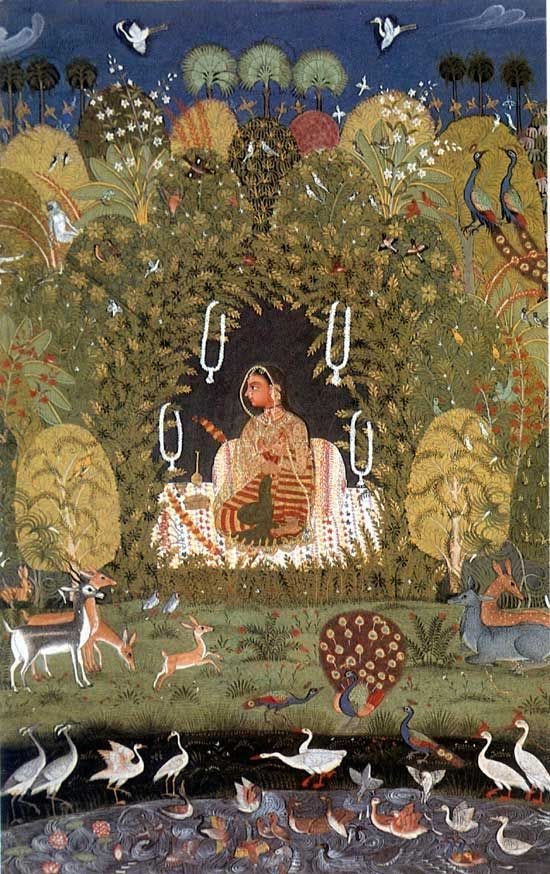
Cut to 2023 when I started working on the manuscript for The Salt Princess. I recalled the miniature painting style and knew I wanted to blend that style into my work. It was the perfect way to enhance the folk story and give it that regal fairytale vibe it needed.
To prepare myself, I began with a short online course that taught some basics of miniature painting at the The King's Foundation School of Traditional Arts which focuses on historical and cultural art practices like Arabic calligraphy, manuscript illumination and Byzantine Icon painting.
I made three studies during that summer, and it helped me understand the specific technique needed for this style, as well as some of the foundational elements that are seen in it and the course mentioned some key artists and books to look into for further research.
I talk more about my experience in this course here!
Then I began collecting my references. I absolutely love Pinterest, and I create a board for every book I work on. It’s always so interesting seeing how each books board looks like. Here are a few examples.
I collect a wide variety of images, literally anything that could be helpful. Things like:
Color palettes, textiles and patterns, typography, photos, fashion, architecture, general vibes, and artwork from both historical and contemporary sources.
I searched both within the app, but also collected a plethora my own images by looking at reference books, searching through museum archives and checking out the library.
Character Design Process
Once my manuscript and research was complete, I move onto character design. I like to say that with a good design, you can know everything about a character by just looking at them. Potentially their personality, likes and dislikes, and goals. If you have a cast of characters, you should be able to differentiate them easily.
In the book, our main character is Princess Amal. She is cunning and naive, and feisty and a dreamer. She is the youngest and most rebellious of four daughters. Knowing this information, I wanted Amal’s design to be in strong contrast against her elder sisters, who are perfect princesses in every way.
I started with Amal, and went through several rounds of drawings to figure her out.
I wanted her personality to shine, and it took a while to capture her essence. She felt too mature at first, or too generic.
And then I felt that I needed to include more of the traditional Moghul style and features into her design as well. They use a lot of soft shapes, with exaggerated eyes and strong profiles. I leaned into that a bit more and eventually found a balance.
With the bottom right design I felt like I was finally on the right track.
Here is where I finally felt like I was almost there! I really liked the softer features, but just needed to age her down a bit more and finalize her costume and hair design (my favourite part!).
And this was my final design!
Then I started work on her sisters. Since I was focusing on contrasts, I tried to make them tall and slender with sharper lines where Amal is a bit rounder. They have sleek, perfect hair while Amal’s is as unruly as she is.
I was able to reuse some of my earlier Amal design ideas when designing the sisters, so that process wasn’t a waste either.
Here I also played more with costume design, and in the above photo I finalized the sister on the left, but felt I really needed to further differentiate the other sister’s appearances.
Pakistan is filled with incredible diversity (Their bordering neighbors are India, Afghanistan, Iran & China), with people coming in all different skin tones, hair textures, and facial features so there really isn’t one way to look Pakistani. I wanted to highlight that in the sisters as well, so I worked to give each girl a distinct look.
In the meantime, I also went through the same process with the King.
Eventually, I landed on my finalized cast!
Especially when working with such detailed designed, it’s helpful for me to have a character line up and potentially a turn-around created that I can look back to while I’m working to make sure I stay consistent and on-model with my designs. I also figure out my colors at this stage, and to differentiate everyone, I gave each character a distinct color palette (note that the right-most sister eventually changes to yellow in the actual book). Similar to the costuming in the High School Musical films haha.
Even though the cast goes through multiple outfit changes throughout the book, they will always remain recognizable to our audience.
In the past, I’ve also done art tests to figure out which medium I want to work with. For my book Sari Sisters, I used a combination of paints and tissue paper to imitate fabric and I wanted to make sure it would work before I committed a whole book to it.
In the past I’ve also created the following prep for my books (as needed):
Turnarounds
Expression charts
Color script
Collecting
Research on typography
You don’t have to do this much prep when you are illustrating a book, or any kind of project. But the more development and a strong foundation you have, the easier the rest of the work is.
Because I’m working in traditional media and I can take up to a week to illustrate a single page, I can’t afford to make mistakes. It’s best that I have my designs are totally finalized, that my sketches are as clean as possible. I should have a solid understanding of my world so that if I have all the ingredients, I can just go with the flow while I’m painting and not have to stop every ten minutes because I got someone’s face wrong, or because I have to search for some reference for a type of plant.
Another important thing is to allow the chance to explore and make mistakes. As you saw, it took me several tries to find Amal’s design. If I had settled on my first choice, I might have missed out on the perfect idea later on. Even if I feel like I got it right the first time, I’ll still try to push myself to explore a bit more in case I find something new in my subsequent exploration.
Big disclaimer!
It is definitely a privilege and luxury to have the extra time to do all this development. It’s only in recent years that my book schedules have been long enough (8 months to a year) to incorporate this time to really immerse myself into my book and understand my medium and world.
In the past when I’d only have 3 months if I was lucky, I would dive straight into my sketches and either improvise along the ride or just go with the motions and go the ‘obvious’ route in my choices. This kind of ‘churning out’ mentality definitely lead to burnout and dissatisfaction with my art a few years ago so I’m super thankful that I currently have the space to grow and explore my art these days.
Little notes:
As a reminder, if you preorder my book from from Buyolympia, you can get a FREE 8x10 print!
If you are in the Dallas area, I am holding a book launch event at Bloom Cafe on April 20th at 11am! I’ll share more details closer to the date, but keep an eye out for it!
I want to thank everyone for the wonderful response on my last post! I promise I read all the comments, I just can’t find the time to answer them ;__;
I have been working hard on a huge brand and website redesign that I am excited to share at the end of the month! Can’t wait to show you guys what I’ve been up to!
I need a new cosy show! I’ve been on a weird binge of shows about eclectic geniuses (Young Sheldon, Elementary then High Potential haha). I love a procedural or a light-hearted, old comedy that I can flit in and out of in those rare moments I get tv time.
Ramadan Mubarak!!!








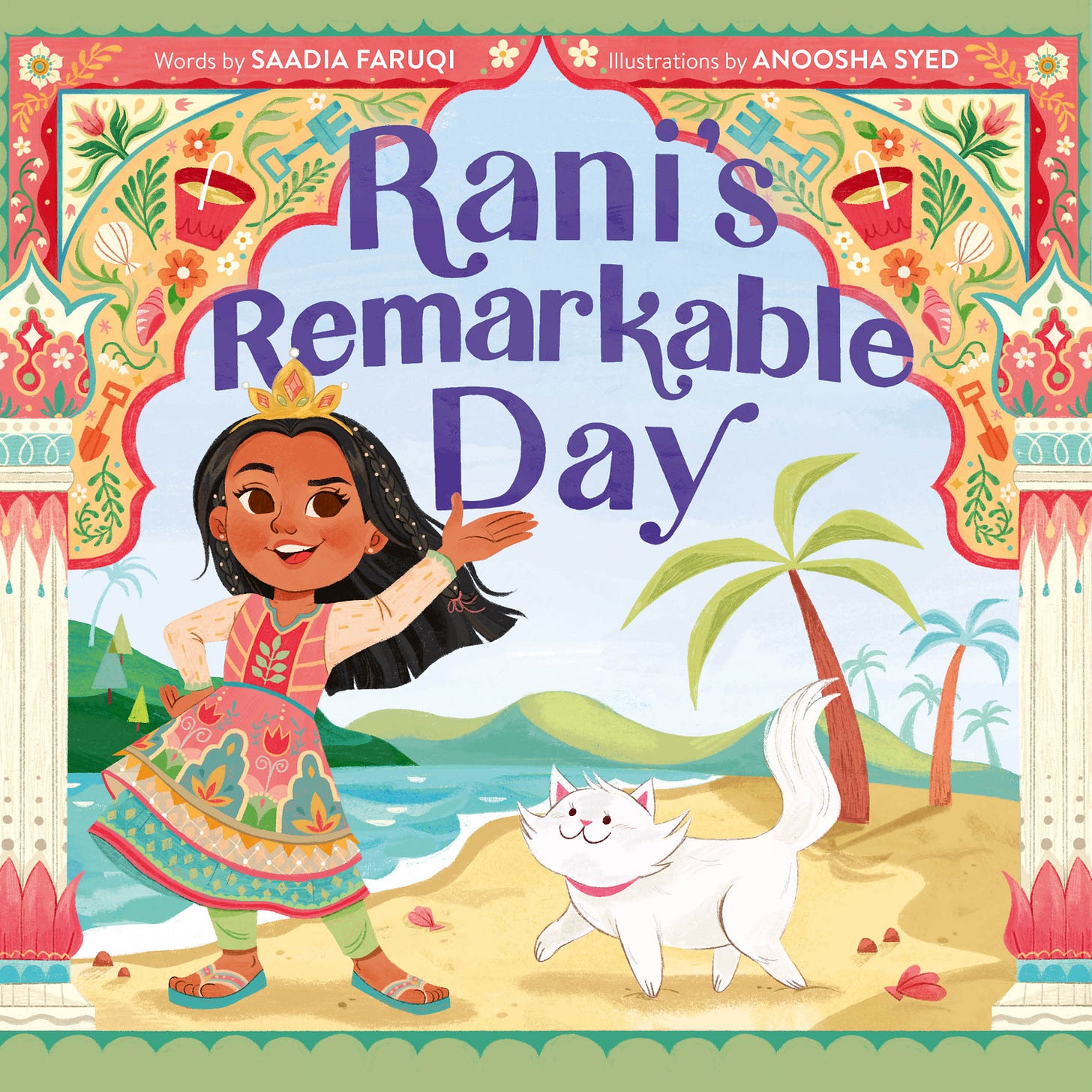






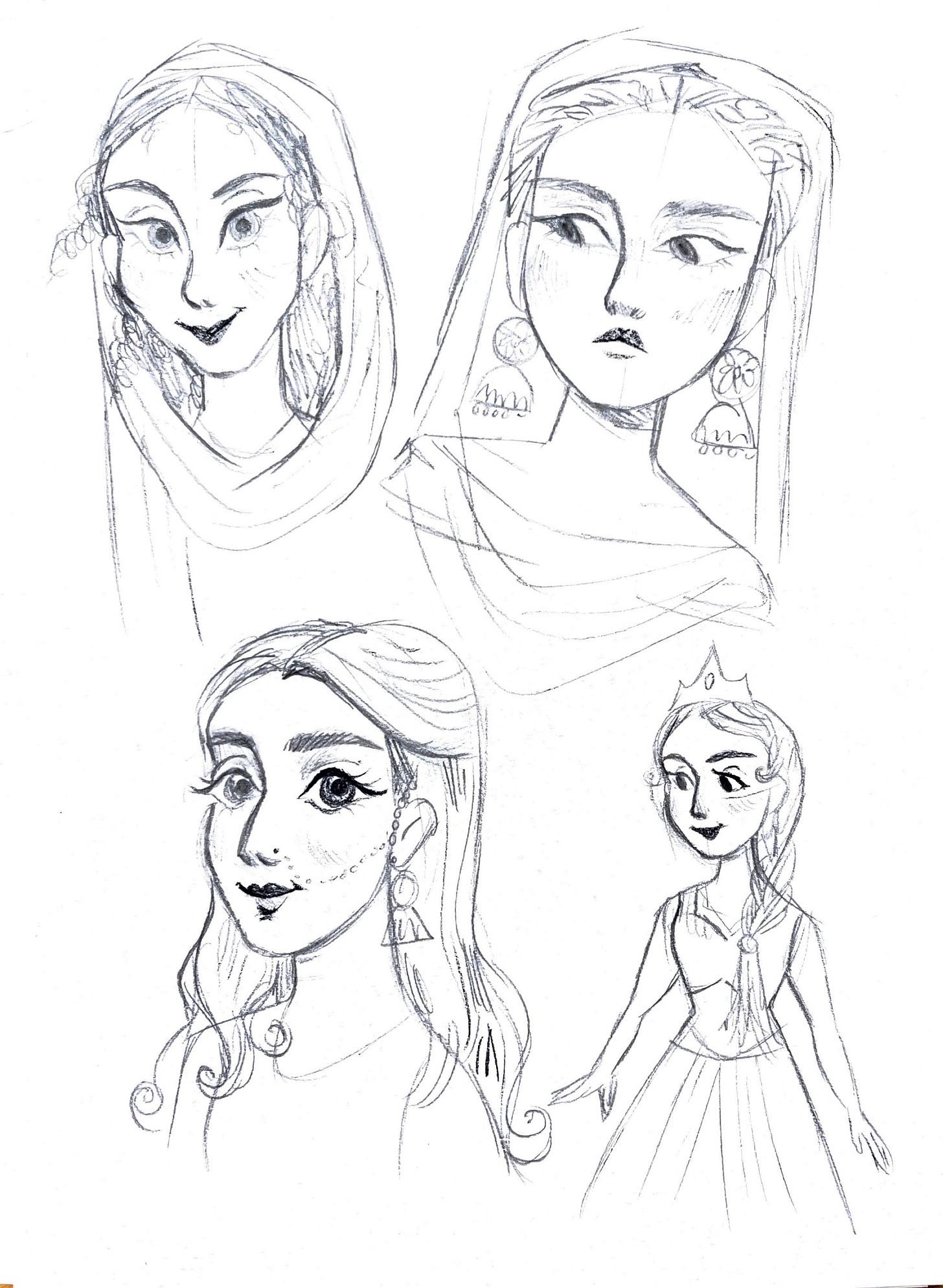
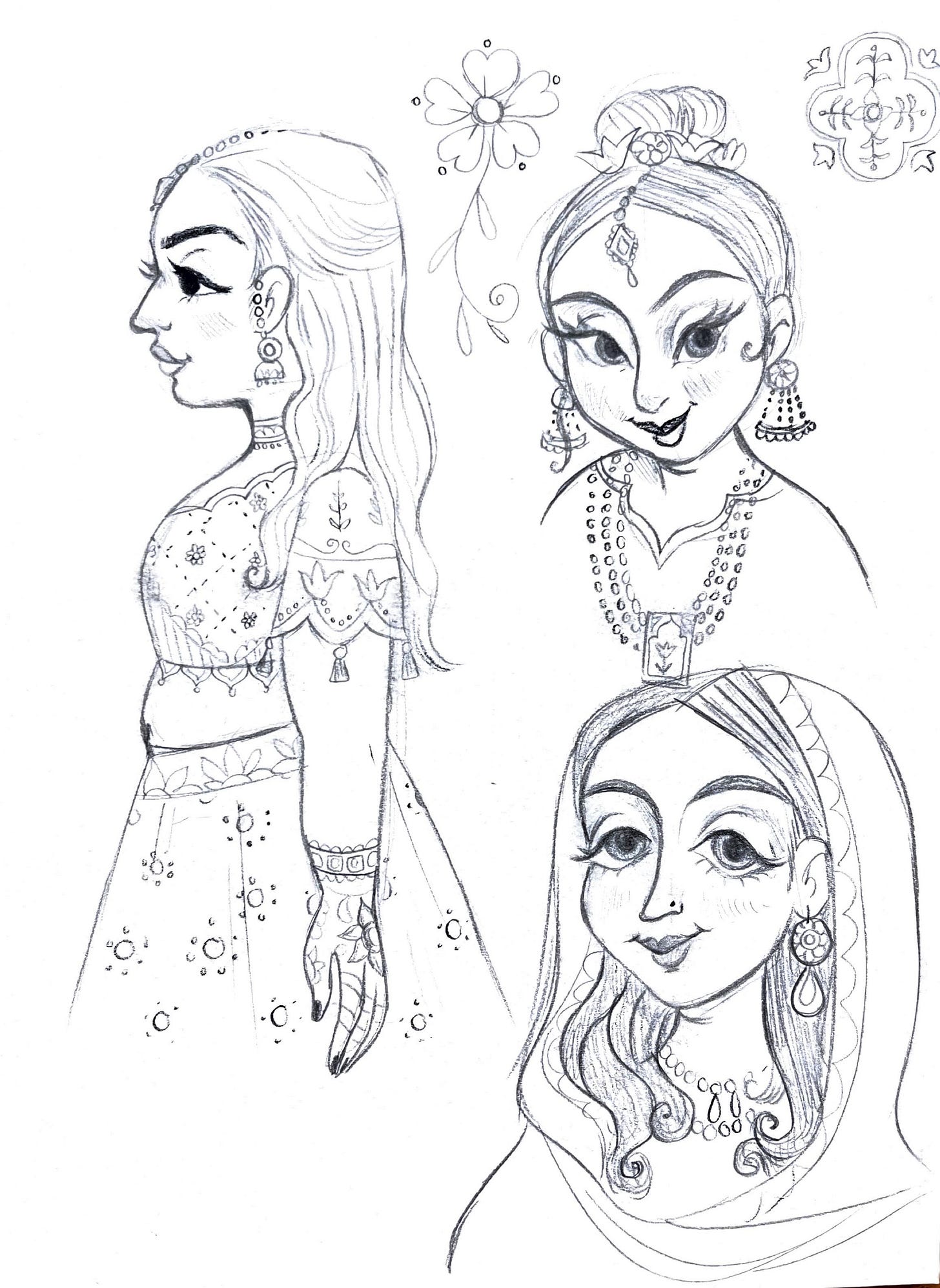



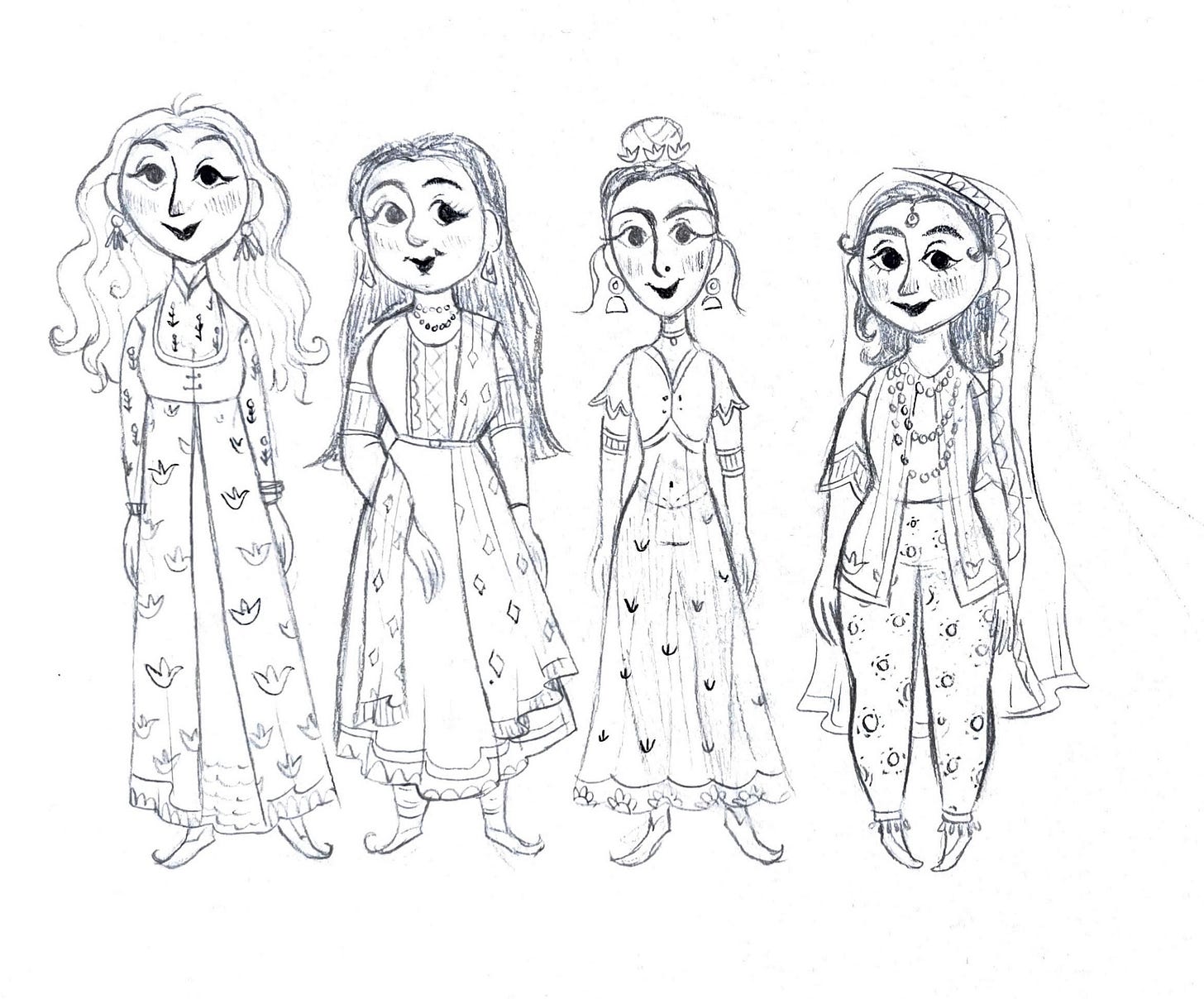

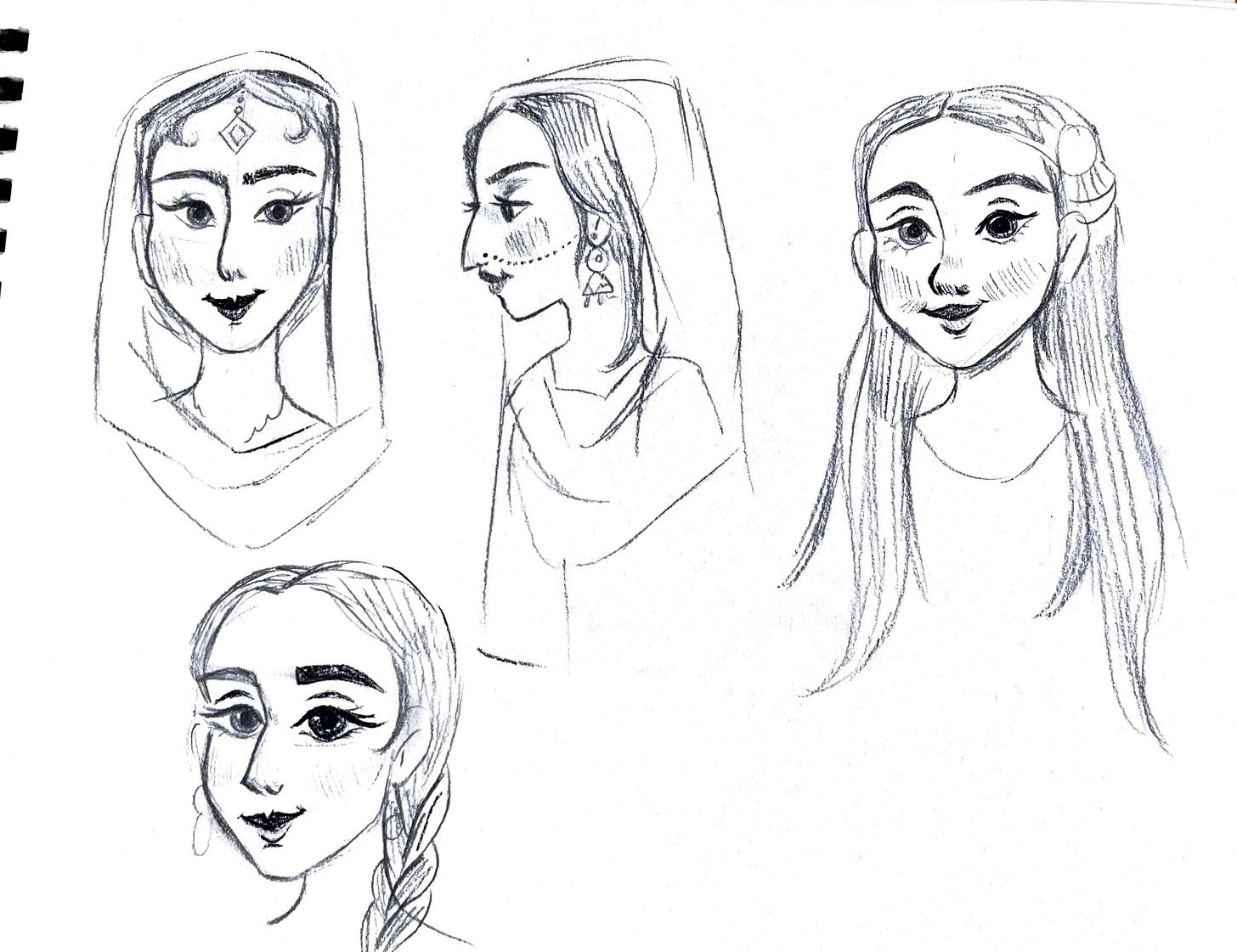
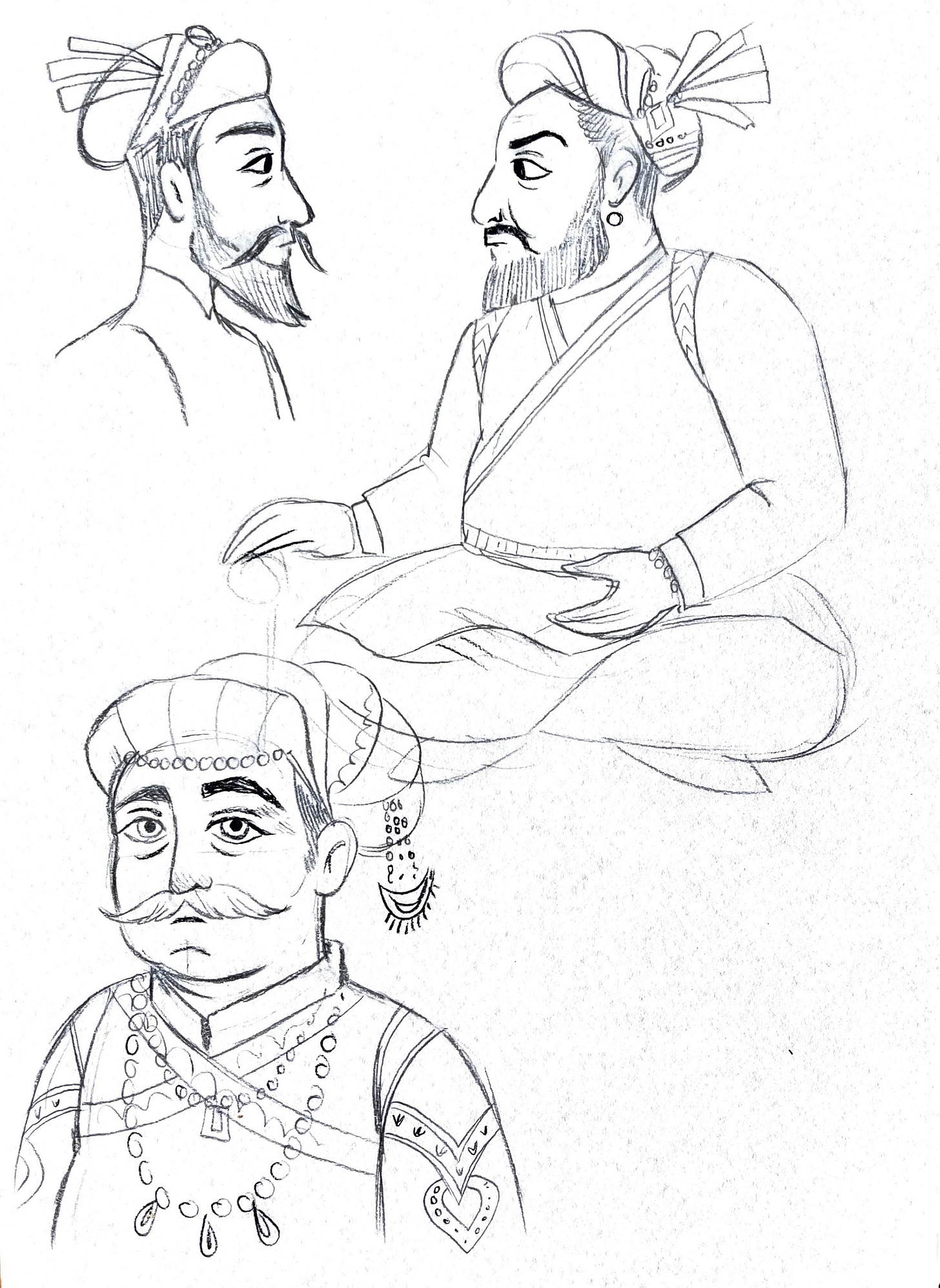



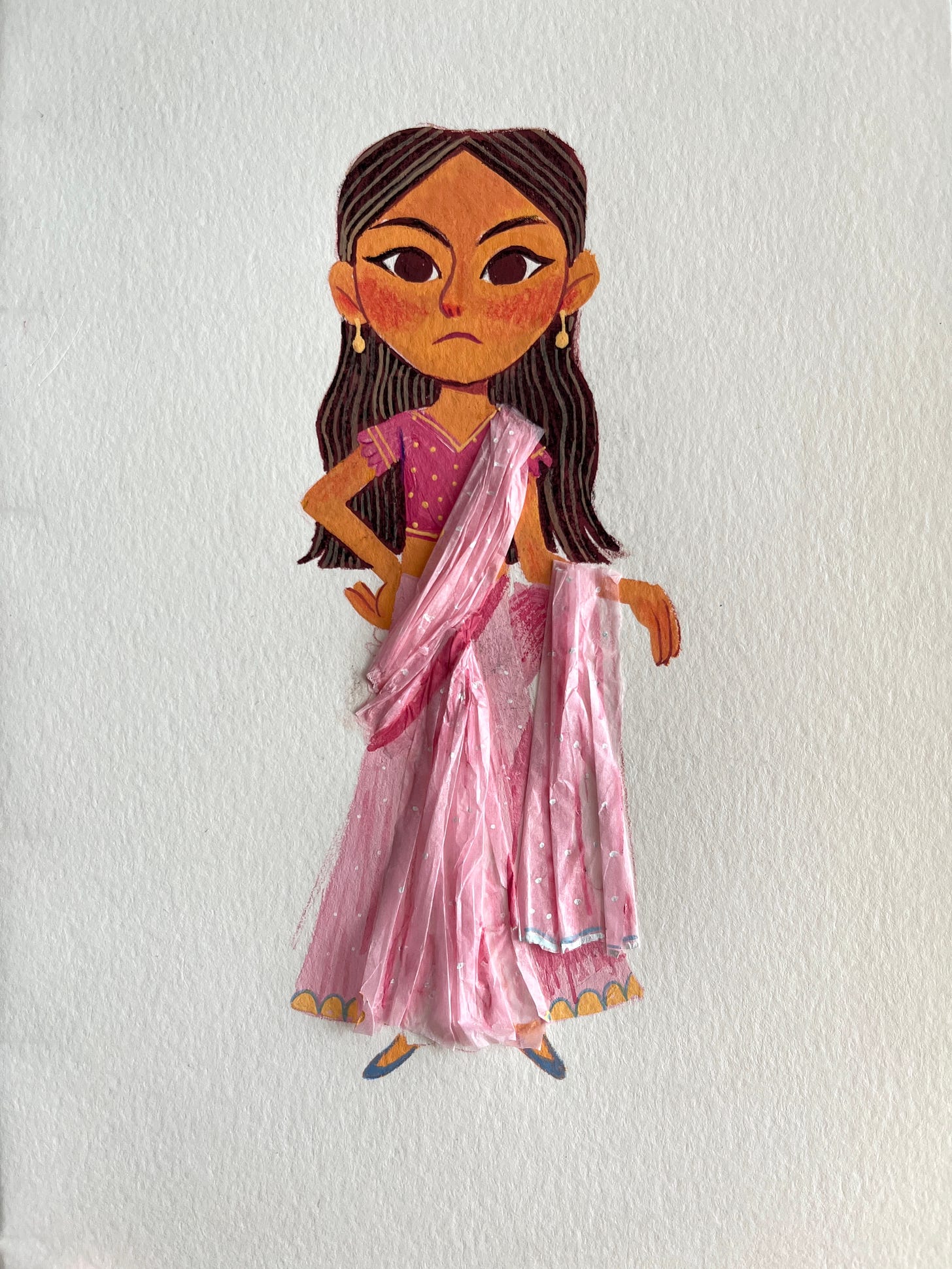



I love getting to see your process. It’s inspiring to see how much work and thought go into your illustration. I really admire your style and just how thoughtful you are in your research and character studies
So wonderful to see your process. I absolutely love how you incorporated the tissue paper into the saree design!!
Cozy show: this is an old one, but if you haven't watched Parks and Rec yet (or if it's been a while since you watched it) check it out! It's my go-to comfort show.